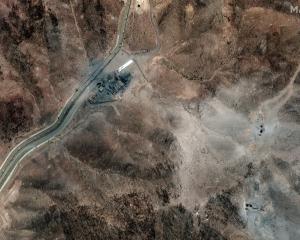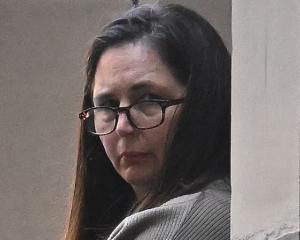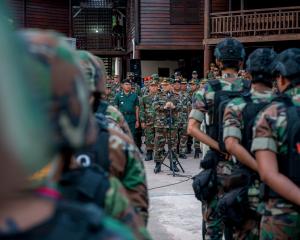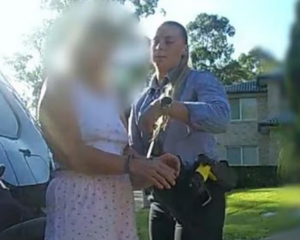A record number of police patrolled the carnival, one of Europe's biggest street festival that usually draws about one million people to west London for a procession of musicians, performers and dancers dressed in extravagant costumes.
The second and final day of the party was largely peaceful but limited violence broke out as darkness fell and police moved to disperse the crowds.
Riot police drew their batons as they tried to push back a crowd of youths hurling bottles and cans at officers around the area of Ladbroke Grove, a Reuters journalist said.
Earlier, police arrested three people after a man was found with what was believed to be stab wounds to the abdomen and hand. He was taken to hospital in serious condition, police said.
The festival, which like many big events globally features arrests and occasional outbreaks of violence each year, carried more than usual significance this year because it is the biggest event in London since widespread riots broke out on August 6.
With the London Olympics less than a year away, the capital's police force needed to restore public faith in its ability to ensure security at major events.
Police said they had made 214 arrests on drugs charges, theft or other offences by Tuesday evening, compared to 243 in total over the weekend last year. More than 6500 officers were deployed to Monday's event, nearly 1000 more than last year.
They used special powers that allowed them to stop and search people they suspect may want to cause trouble and to force them to remove any face masks.
Some had worried the increased police presence would affect the mood on the streets of Notting Hill, setting for the 1999 film of the same name starring Hugh Grant and Julia Roberts.
Businesses and homeowners boarded up their properties, reflecting nerves after the riots that amounted to Britain's worst violence in decades. But partygoers were positive.
"It's been a really good vibe so far. Great sound systems, floats, and the police have handled it well, they've judged it right being helpful and approachable," said Sergio Green, 47, an architect from east London.
"It's what Londoners needed."
The carnival ended more than an hour earlier than previous years.
Crowds had lined the streets to watch a procession of trucks carrying performers with painted faces, flamboyant costumes and multi-coloured wigs, some waving flags or blowing whistles.
Roads along the procession route were lined with hundreds of food stalls flying the yellow, green and black flag of Jamaica and the black-and-red of Trinidad and Tobago.
The smell of fried fish, jerk chicken and fried plantain wafted over the route as sound systems boomed with the beats of "drum 'n' bass", hip hop, reggae and samba.
The police largely kept a low profile, patrolling in pairs or on bicycles. In addition to those deployed for the event, another 4000 police were on stand-by in case of trouble.
Riots broke out in London earlier this month after a protest over the police shooting of a suspect in the north London neighbourhood of Tottenham -- nine miles northeast of Notting Hill -- turned violent, later spreading to other parts of London and other English cities.
The capital's police made 2000 arrests after the disorders, in which hooded rioters looted businesses, set buildings ablaze and fought street battles with officers.
Inspired by Trinidad's carnival, the Notting Hill event was first held in London in 1964 and has grown into one of the world's biggest.
In its early days the carnival was marred by ethnic tension between police and youths. Riots there in 1976 inspired the Clash to write their classic protest song "White Riot."
Since then much of the area has become more affluent and home to the rich and famous, including British Prime Minister David Cameron who lived here until moving into 10 Downing St last year.












